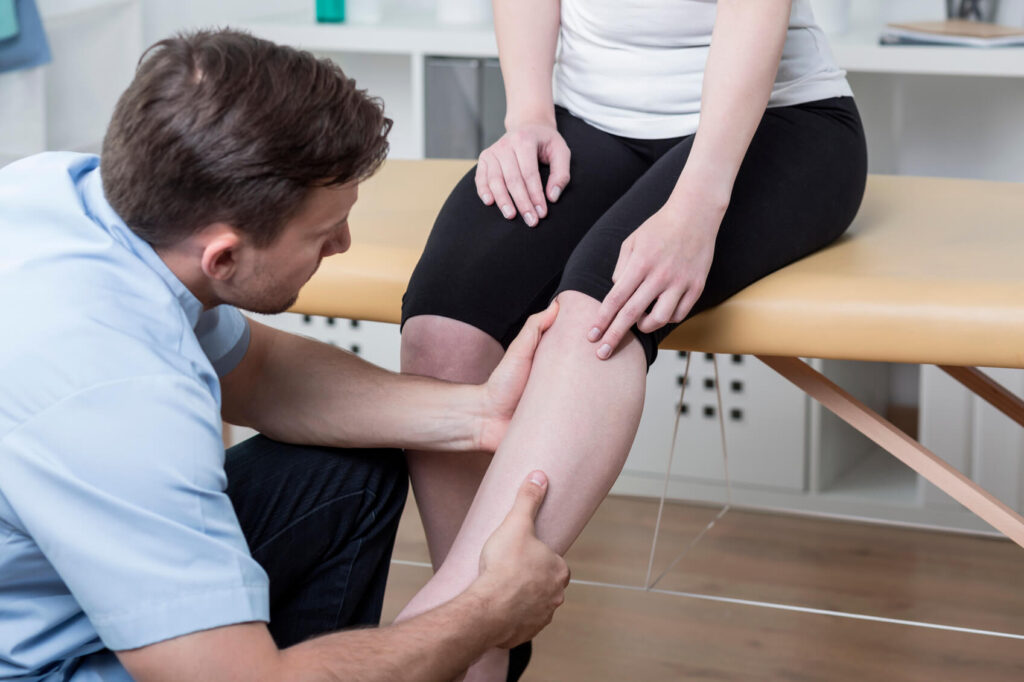Top 8 Tips For Successful Recovery From Total Knee Replacement

Are you unable to get a full night’s rest because of knee pain?
Have you stopped participating in physical activities?
Do you avoid stairs due to pain in your knees?
Have all conservative treatment options failed to give you long-term relief?
If you answered “yes”, then yes, you are more than likely a candidate for knee replacement surgery.
Tip #1: Get all your questions answered
Any surgery carries with it the potential for complications, and some degree of pain and discomfort. Prior to committing to a surgical procedure:
- Talk frankly with your orthopedic surgeon.
- Express your fears and concerns.
- Get all the answers you need to make an informed decision.
Tip #2: Know What To Expect
Understanding what to expect each step of the way enables you to focus on the healing process and the long-term goal of living pain free.
Every surgical recovery time is different, but typically:
- You will spend at least a few days in the hospital.
- Your surgeon may recommend that you spend a few days at an in-patient rehabilitation facility as well. This is an important step in the recovery process.
- You will need to practice using assistive devices ,like walkers, canes or crutches, and be able to climb at least a few stairs.
- Once you are able to navigate about, and have a handle on pain control you can move on to the next challenge- dealing with going home.
Tip #3: What you need to do before surgery
Here’s a few pointers to make your return home safe and allow you to recover quickly. Make sure :
- Your home is ready for your return. Put a plan of action in place.
- It will be important that you have someone to stay with you immediately following your release from the hospital. It would be best if you could avoid stairs for awhile.
- Make sure that you have sufficient clear floor space to maneuver a walker.
- Remove any throw rugs that could cause you to slip and fall.
- You will need to have a sturdy chair ( one that does not sit too low), a shower seat and grab bars for the bathroom, and a raised toilet seat.
- In addition, you may find it helpful to have a long-handled shoe horn.
Tip #4: The Role of Physical Therapy
Before booking surgery for a total knee replacement schedule an appointment with a physical therapist to discuss some pre-surgery exercises you can do to strengthen the muscles surrounding the knee. Being proactive will give you a higher success rate for optimum recovery.
Following surgery, once your physician gives you the “all clear”, you can begin an intensive physical therapy program. You may experience some discomfort and stiffness initially, but this is an important aspect of the rehabilitation process.
The main purpose of a PT program is to strengthen the hip, thigh and calf muscles, in addition to the muscles surrounding the knee itself. You will also be asked to do some specific exercises at home during the healing process.
Tip #5: Hang in there
The road to full recovery can be a bit bumpy at times. When things get tough, remember that your rehab is a commitment you are making to yourself. Just hang in there, things will get better with time.
Healing is a very gradual process, allow your body all the time it needs to stabilize and get back to your new normal. Yes, walking and exercising without the pain you were experiencing prior to surgery is most certainly something to look forward to, and something worth waiting for. And it can be much sooner than you anticipate:)
With continued therapy you will find your endurance increasing. Some degree of pain and swelling is to be expected, and usually relieved, or lessened, by elevating your legs and applying ice.
Tip #6: Stay active
There is no question that staying active will improve your chance for a full recovery.
- Listen to your body and stop when it hurts too much.
- Walking, swimming, low-impact aerobics and cycling are all good choices for a long-term program.
- Jogging and other high-impact activities ( Basketball, tennis, skiing, baseball) should be avoided, at least for the first year.
- Your health care providers will be the best judge of when you should resume all of the activities you enjoyed prior to surgery.
Once you are fully recovered, it is important that you continue with an exercise program. Ask your physical therapist to recommend an in-home program that you can follow.
Tip #7: Don’t forget these
Once you have an artificial joint it is important to:
- Notify all of your health care providers, and dentists. Invasive procedures can put you at risk for infection, and antibiotics will need to be taken prior to any future surgical or dental procedures.
- You may want to avoid air travel for awhile. The pressure changes in the plane cabin, and the long periods of sitting can cause your knee to swell. Check with your doctor or physical therapist before making air travel plans.
- Keep in mind that having an artificial joint may cause problems at airport security check points. Metal detectors may activate an alarm. It would be wise to notify the screener that you have an artificial knee.
- If you do a lot of traveling consider getting a medical alert card detailing your condition.
Tip #8: How to prolong the need for joint replacement
It is possible to prolong the need for joint replacement by following a few simple healthy suggestions.
- Keep your weight at a healthy range
- Wear well fitting, sturdy footwear
- Follow a low-impact exercise regimen
- Don’t over stress sore joints
- Get sufficient rest
